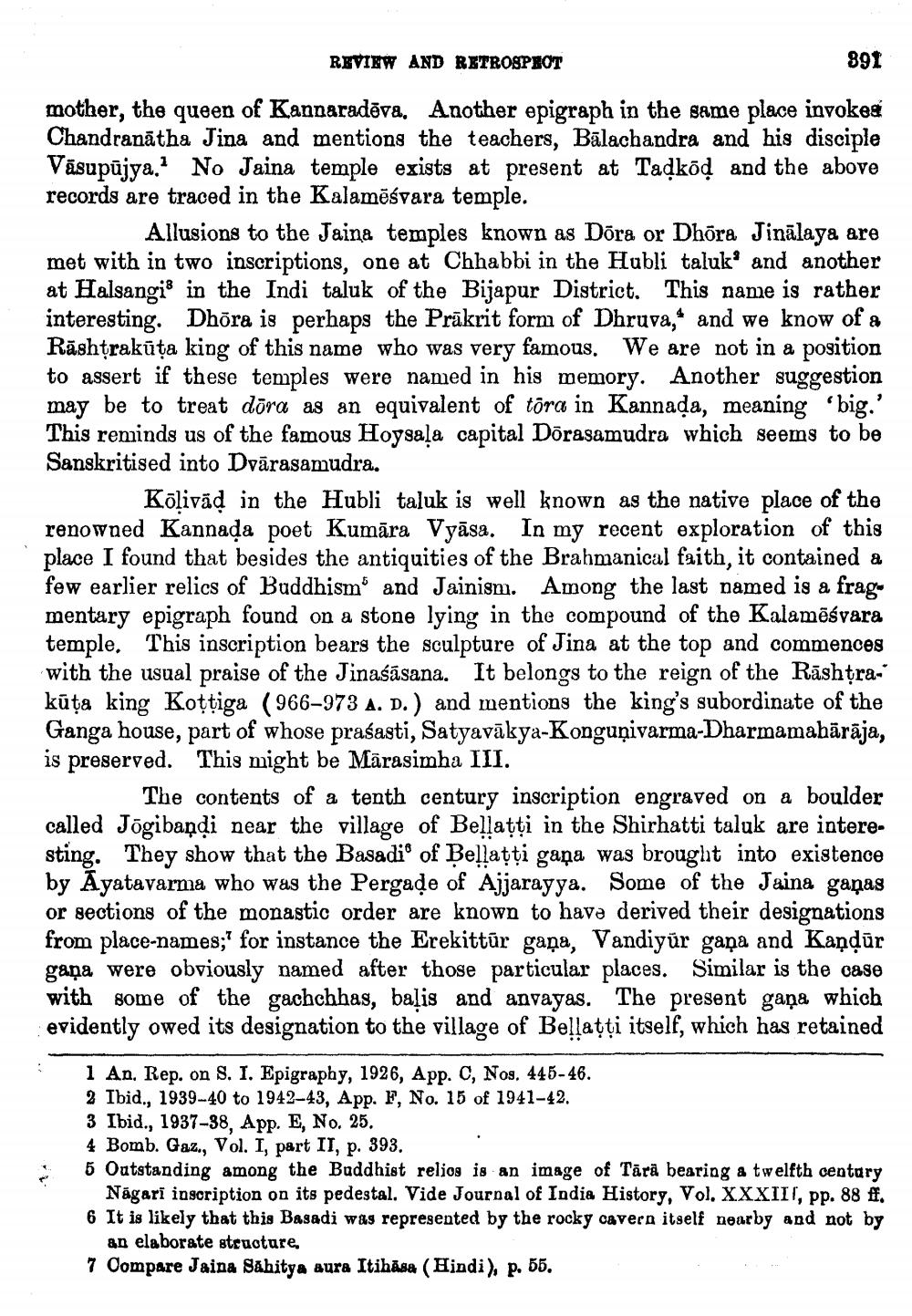________________
RKVIEW AND RETROSPHOT
891
mother, the queen of Kanparadēva. Another epigraph in the same place invokea Chandranātha Jina and mentions the teachers, Balachandra and his disciple Vāsupūjya.? No Jaina temple exists at present at Tadkod and the above records are traced in the Kalamēśvara temple.
Allusions to the Jaina temples known as Dora or Dhöra Jinālaya are met with in two inscriptions, one at Chhabbi in the Hubli talukand another at HalsangiS in the Indi taluk of the Bijapur District. This name is rather interesting. Dhõra is perhaps the Prākrit form of Dhruva," and we know of a Rāshtrakūta king of this name who was very famous. We are not in a position to assert if these temples were named in his memory. Another suggestion may be to treat döra as an equivalent of tõra in Kannada, meaning 'big.' This reminds us of the famous Hoysala capital Dõrasamudra which seems to be Sanskritised into Dvārasamudra.
Kõlivad in the Hubli taluk is well known as the native place of the renowned Kannada poet Kumāra Vyāsa. In my recent exploration of this place I found that besides the antiquities of the Brahmanical faith, it contained a few earlier relics of Buddhism and Jainism. Among the last named is a fragmentary epigraph found on a stone lying in the compound of the Kalamēśvara temple. This inscription bears the sculpture of Jina at the top and commences with the usual praise of the Jinaśāsana. It belongs to the reign of the Răshtrakūta king Koţtiga (966-373 A. D.) and mentions the king's subordinate of the Ganga house, part of whose prasasti, Satyavākya-Konguņivarma-Dharmamahārāja, is preserved. This might be Mārasimha III.
The contents of a tenth century inscription engraved on a boulder called Jõgibaņdi near the village of Bellatti in the Shirhatti taluk are interesting. They show that the Basadio of Bellaţți gana was brought into existence by Ayatavarma who was the Pergade of Ajjarayya. Some of the Jaina ganas or sections of the monastic order are known to have derived their designations from place-names;" for instance the Erekittur gaņa, Vandiyur gana and Kandūr gana were obviously named after those particular places. Similar is the case with some of the gachchhas, baļis and anvayas. The present gaṇa which evidently owed its designation to the village of Bellatti itself, which has retained
1 An. Rep. on S. I. Epigraphy, 1926, App. C, Nos. 445-46. 2 Ibid., 1939-40 to 1942-43, App. F, No. 15 of 1941-42. 3 Ibid., 1937-38, App. E, No. 25. 4 Bomb. Gaz., Vol. I, part II, p. 393. 5 Outstanding among the Buddhist relios is an image of Tārā bearing a twelfth centary
Năgari inscription on its pedestal. Vide Journal of India History, Vol. XXXIII, pp. 88 ff. 6 It is likely that this Basadi was represented by the rocky cavern itself nearby and not by
an elaborate structure, 7 Compare Jaina Sahitya aura Itihāsa (Hindi), p. 55.




